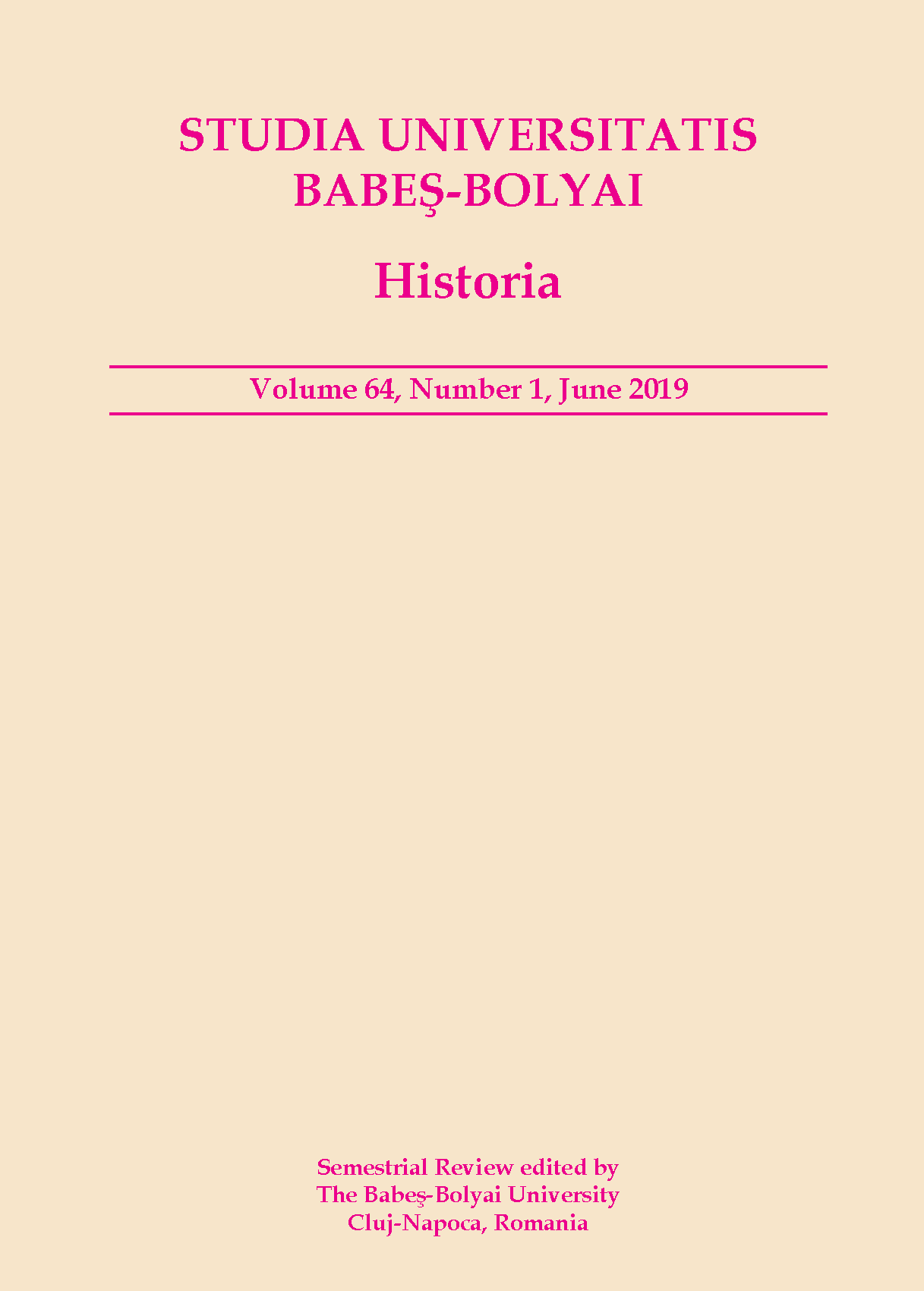“The Instrument of the Devil”. The Image of the Witch in 18th Century Cluj
DOI:
https://doi.org/10.24193/subbhist.2019.1.05Keywords:
witchcraft, 18th century, Court Protocols, female crime.Abstract
The main purpose of our article is to underline some contemporary conceptions regarding witchcraft, and to explain why witch trials based on the same charges could have different outcomes. In order to answer our historical question we will briefly discuss the archetype of the women accused with various forms of magic (11 cases) by the Court of the free royal town of Cluj, and we will try to identify based on the information delivered by the interrogations the kind of occult activities these women were involved in. We came to conclude that our Transylvanian cases are less spectacular than the Western ones, since our witches did not participate in large nocturnal assemblies, they could only occasionally fly and were restrained devil-worshipers. What we learned is that they belonged, with few exceptions, to lower levels of society, had divisive personalities and tended to cause conflicts within the community. Although the trials took place within a male-controlled judicial system, the proportion of female witnesses is higher than in any other felonies, which indicates the presence of a social tension between women. Finally, we also discuss the legal foundation of the witch trials, outlining the fundamental changes occurred in criminal law during the second half of the eighteenth century.
Rezumat: “Instrumentul diavolului”. Imaginea vrăjitoarei în Clujul secolului al XVIII-lea. Scopul principal al articolului este să prezinte câteva concepții contemporane referitoare la vrăjitorie prin analiza narativă a documentelor păstrate în protocoalele de judecată ale orașului Cluj, și să explice de ce procesele de vrăjitorie, pornind deseori de la aceleași acuzații, aveau rezultate diferite. Într-o primă etapă vom discuta pe scurt arhetipul femeilor acuzate de practicarea diferitelor forme de magie (11 cazuri), mai apoi vom încerca să identificăm, pe baza informațiilor furnizate de interogări, în ce fel de activități oculte au fost implicate acestea. Dorim să subliniem că în procesele de vrăjitorie proporția mărturiilor feminine este mult mai semnificativă decât în cazul altor infracțiuni, ceea ce indică de fapt prezența unor tensiuni sociale între femei, cu atât mai mult, cu cât protagonistele acestor procese erau, cu câteva excepții, femei marginale, controversate, care cauzau deseori conflicte în cadrul comunității. Articolul prezintă, de asemenea, și câteva aspecte legate de legislația cu privire la vrăjitorie, evidențiind schimbările fundamentale care au avut loc în a doua jumătate a secolului al XVIII-lea în dreptul penal.
Cuvinte-cheie: vrăjitorie, secolul al XVIII-lea, protocoale de judecată, crimă feminină.
Downloads
Published
How to Cite
Issue
Section
License
Copyright (c) 2019 Studia Universitatis Babeș-Bolyai Historia

This work is licensed under a Creative Commons Attribution-NonCommercial-NoDerivatives 4.0 International License.






